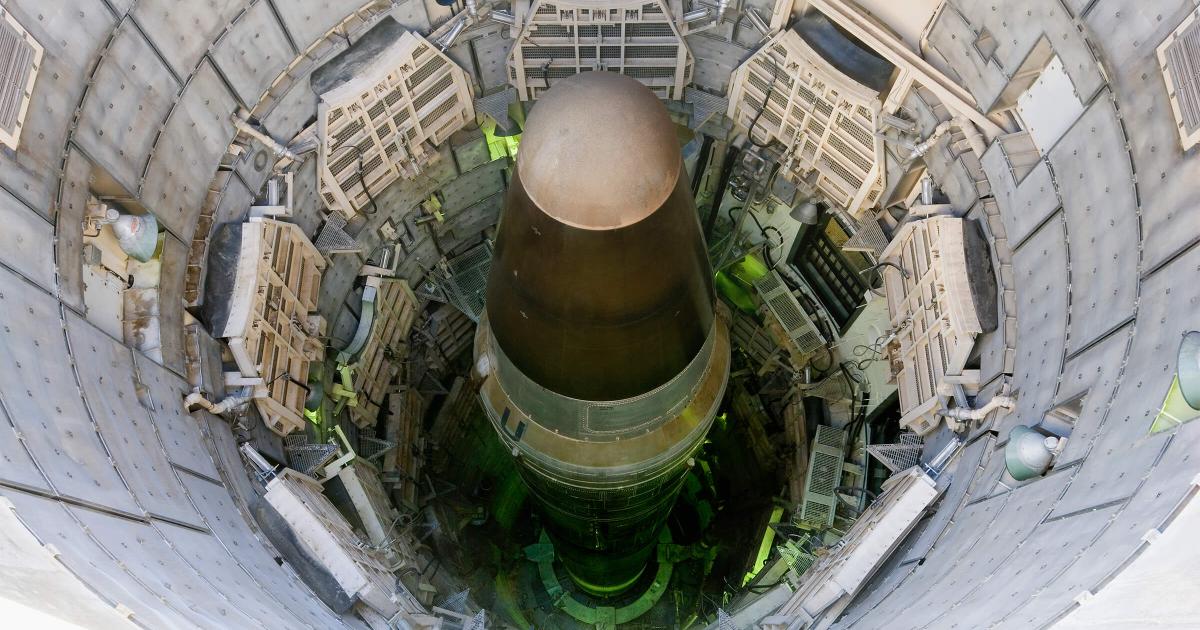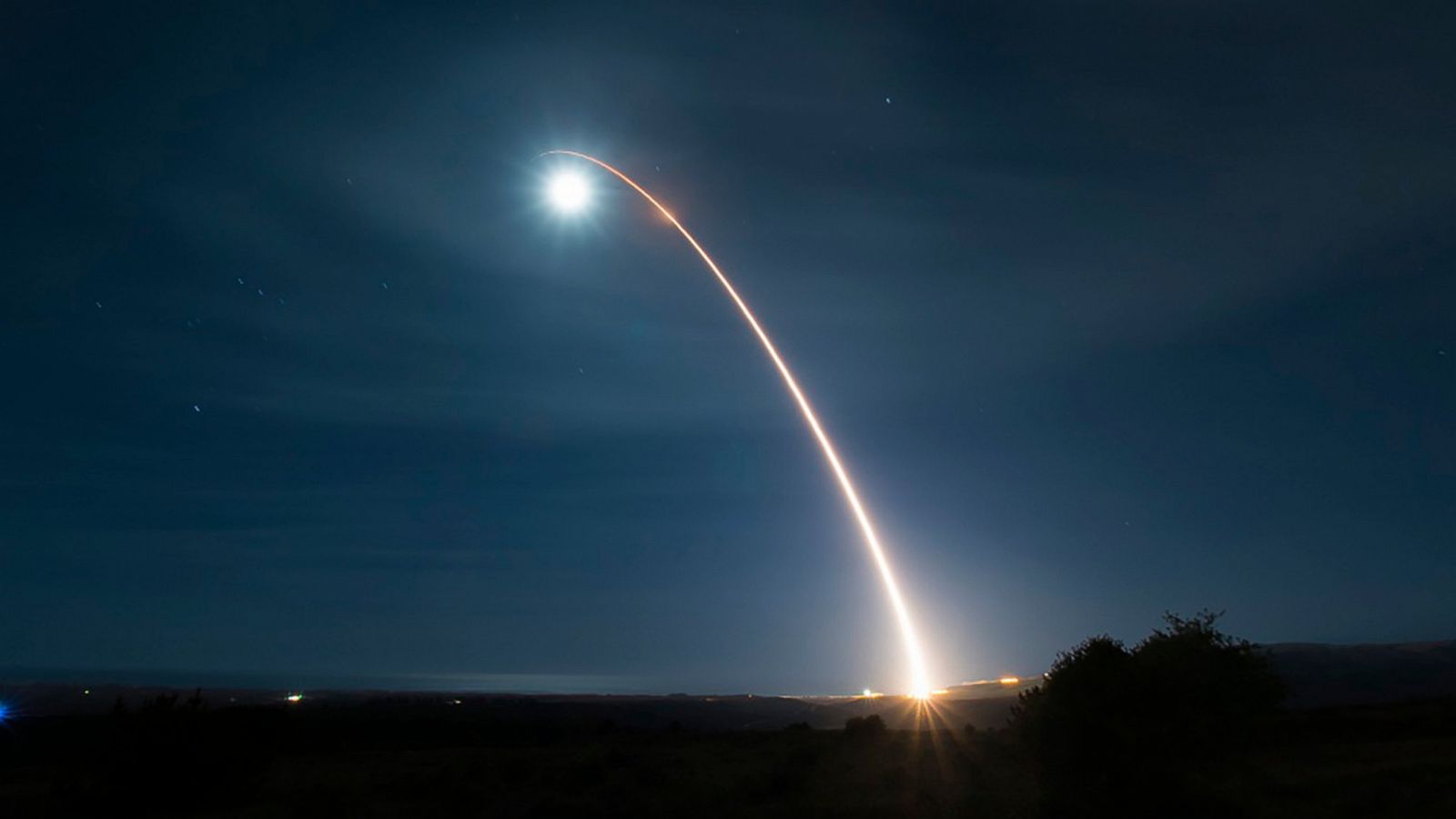Pentagon’s recent report on China’s Military Power estimated that Beijing’s stockpile of nuclear warheads had surpassed 400 in a surprisingly short period. Just days later, there is bickering in the US Congress that Beijing may have amassed more nuclear warheads than Washington.
The speculations have been raised due to the US Strategic Command’s (STRATCOM) recent classified determination to Congress by a clause in the fiscal 2022 National Defense Authorization Act, Defense News reported. The STRATCOM oversees the US nuclear inventory.
According to the clause, the Command must notify the US Congress if China surpasses the US in one of the three components concerning its Inter Continental Ballistic Missile (ICBM) arsenal. This would allow US Congress to be informed if China deploys more ICBMs or ICBM launchers than the United States.
According to data from the Pentagon’s annual China report and a report from the Congressional Research Service, the United States continues to have a numerical edge over China regarding the number of deployed ICBMs and ICBM launchers. This means that neither of those two circumstances led to the STRATCOM alert.
The third component of the law that requires the STRATCOM to determine Congress is when China surpasses the United States in the number of nuclear warheads equipped on its ICBMs.
In a letter to STRATCOM commander Admiral Charles Richard on December 5, James Inhofe, the senior Republican on the Senate Armed Services Committee, urged the Pentagon to declassify the determination as required by law. In addition, other policy experts have also opined that the speculations among lawmakers may be correct.
Read the full letter I sent today alongside @RepMikeRogersAL, @SenatorFischer and @RepDLamborn ⬇️ pic.twitter.com/YbeoZHTb8C
— Sen. Jim Inhofe (@JimInhofe) December 5, 2022
These assertions are significant as they come days after the US released the China military power report emphasizing that the country was accelerating its nuclear expansion on a war footing. It also predicted that Beijing could amass around 1,500 nuclear warheads by 2035 if the expansion continues at the same pace.
According to the Congressional Research Service, the United States had 1,389 warheads on a total of 665 deployed ICBMs, submarine-launched ballistic missiles, and heavy bombers as of September 2021.
As per US estimates, China has an aggregate of roughly 300 ICBMs and ICBM launchers. However, the exact number of nuclear warheads in the Chinese arsenal is not known.
In a rather unusual move, even though China lambasted the US report, it stopped short of addressing the accusations regarding its nuclear build, leaving room for concern and ambiguity.
Further, the US report contends that China tested more ballistic missiles (135) in 2021 than the rest of the world combined. Regardless, China has doubled its ICBM stockpile since 2020 and has moved at an unprecedented speed to add more teeth to its strategic power.
China Expanding Nuclear Arsenal
China’s Defense Ministry stated earlier this week in a scathing reaction to the US report suggesting a significant expansion in nuclear capabilities that Beijing scrupulously adheres to its policy of refraining from using nuclear weapons as a first resort “at any time and under any circumstances.”

The Spokesperson for the Chinese Defense Ministry, Tan Kefei, said, “the report distorts China’s national defense policy and military strategy, makes groundless speculation about China’s military development, and grossly interferes in China’s internal affairs on the issue of Taiwan.”
For a long time, China has maintained what it refers to as a wholly defensive national security approach, which includes the assurance that it will never be the first to deploy nuclear weapons in a conflict. This position has frequently been contested domestically and internationally, particularly regarding a dispute involving Taiwan.
“What needs to be emphasized is that China firmly pursues the nuclear strategy of self-defense and defense, always adheres to the policy of no first use of nuclear weapons at any time and under any circumstances and maintains its nuclear force at the minimum level required for national security,” Tan said in the statement.
Jeffrey Lewis, the director of the East Asia Nonproliferation Project at Middlebury College, told Defense News that China’s Dongfeng-41 missile can “carry multiple warheads, so 300 missiles could get you slightly over 400 warheads.” However, he repudiated the claims that Beijing could have swollen its nuclear warhead inventory to overtake that of Washington.

That being said, the United States is now within credible striking distance for the first time, thanks to China’s deployment of a new generation of submarine-launched ballistic missiles called the JL-3.
In March, the US STRATCOM reportedly informed the US Senate Armed Services Committee that the missiles could strike the continental United States “from a protected bastion within the South China Sea.”

On its part, the United States has upped the ante by unveiling its B-21 Raider stealth strategic bomber, positioned as its best bet in case of a conflict with China.
In addition, the US Nuclear triad got another shot in the arm earlier this year as it test-fired the unarmed Minuteman-III Intercontinental Ballistic Missile (ICBM), a Ground-Based Strategic Deterrent.
Both China and the United States have a nuclear triad that typically ensures ‘survivability,’ as a nuclear strike does not disable a country’s nuclear arsenal and allows it to launch a retaliatory strike.
This is expected to maintain effective deterrence between the two arch-rivals. With tensions rising in the region, China has categorically stated that it never renounced using force to merge Taiwan with the Chinese mainland, which would be a red line for the United States.
- Contact the author at sakshi.tiwari9555 (at) gmail.com
- Follow EurAsian Times on Google News




